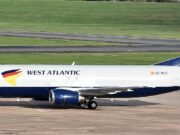The Transportation Safety Board of Canada (TSB) has issued the newest version of its safety Watchlist — including five problem areas involving aviation — and pledged “a more proactive approach” to improving safety across Canada’s transportation network.
The Watchlist, made public on Oct. 31, singles out 10 areas in need of improvement. Three areas address problems that specifically affect the aviation community: unstable approaches, risk of collisions on runways and runway overruns. Two other areas are problems throughout the transportation industry: safety management and oversight, and slow progress addressing TSB recommendations.
In addressing the aviation-specific recommendations, TSB cited Flight Safety Foundation research in noting that 3.5 to 4 percent of approaches are unstable and that, of these, only 3 percent result in go-arounds, “despite airlines’ stable-approach policies.” TSB said that although some airlines are addressing the problem with flight data monitoring, flight operational quality assurance programs, explicit standard operating procedures and nonpunitive go-around policies, major airlines should “expand the use of these tools, evaluate them to confirm that they are effective … and integrate them fully into their safety management systems.”
Although Transport Canada (TC) has begun an inspection campaign to evaluate the effectiveness of such voluntary measures, TSB said that it “remains concerned that, without further action, risks to the public arising from unstable approaches remain.”
Since the runway overrun issue was first placed on the Watchlist in 2010, TSB has investigated 16 accidents involving overruns and issued four safety recommendations. TSB said the issue would remain on the Watchlist until pilots routinely receive timely pre-landing information about runway surface conditions, and until TC requires runway end safety areas at Canadian airports and major airports comply with the requirement.
The runway collision item also has been on the Watchlist since 2010, and TSB said that in the years since then, hundreds of runway incursions have been recorded. TSB said it is concerned that serious incursions will continue “until better defences are put in place.” The issue will remain on the Watchlist until the number of incursions decreases and “new technological defences are installed,” TSB said.
Slow Addressing Recommendations
One issue that is new to this year’s Watchlist is TC’s slowness in addressing TSB recommendations, TSB Chair Kathy Fox said, noting that 52 TSB recommendations have been outstanding for 10 years or longer, and of those, about three dozen have been outstanding for longer than 20 years. “There is no reasonable excuse for taking that long, especially in cases where TC agrees that action is needed,” she said.
The safety management and oversight recommendation centers on the failure to mandate safety management systems in all sectors of the transportation industry, TSB said. The item will remain on the Watchlist until TC implements regulations to require formal safety management processes throughout the transportation industry, transportation companies demonstrate that safety management systems are effectively identifying safety hazards and effective methods of risk-mitigation are being implemented, TSB said.
Overall, of the 10 issues, eight have been identified in previous versions of the Watchlist, Fox said the board plans to increase its efforts to “engage government and industry leaders in dialogue and action that leads to safety improvements.
“No longer is it enough to point out a problem and wait for others to take notice. In the next few days and weeks, we’ll meet with key stakeholders to push for concrete action, and then we’ll report publicly on the results.”


